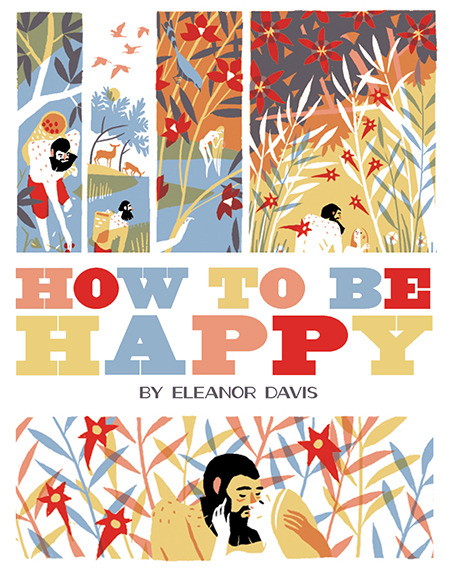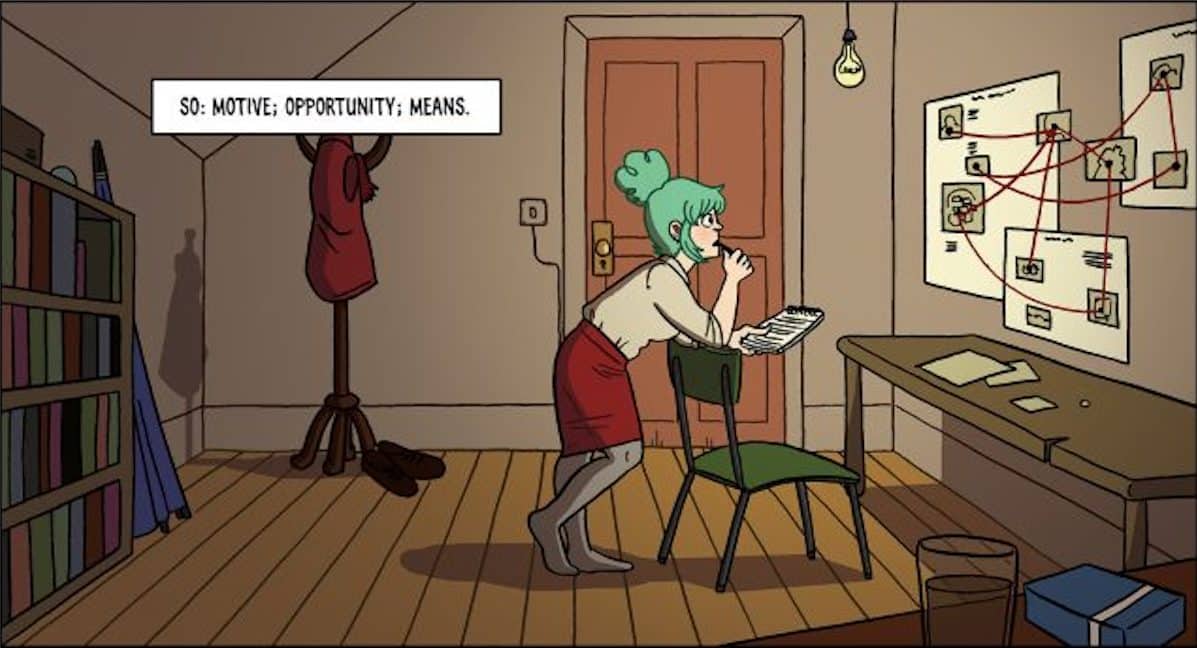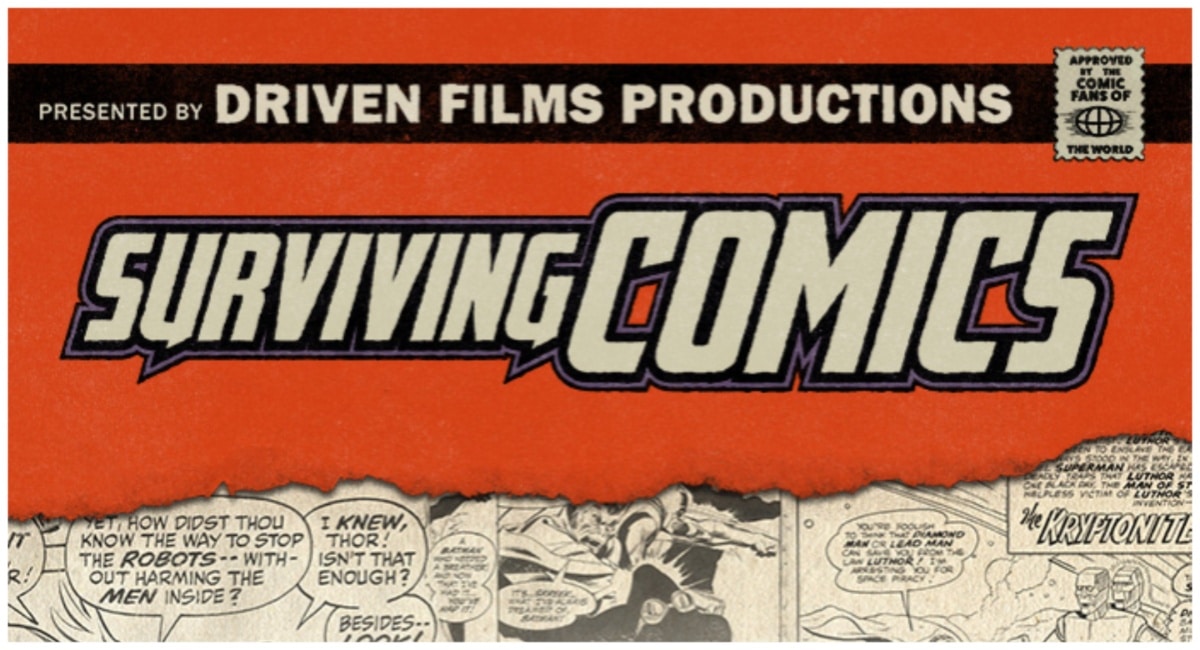So, this is an accurate representation of the Fantagraphics' office today. Thank you, guys: http://t.co/3g1bi271iK
— Fantagraphics Books (@fantagraphics) November 12, 2013
So to no one’s surprise, the Fantagraphics Kickstarter has reached its goal of $150,000. With 22 days to go this could get a lot bigger—or people could just say “mission accomplished” and walk off. But given the nature of Kickstarter, I’d be shocked if that happens.
It was also, for a company that sticks to its own art-based agenda—and one that published Dan Nadel’s infamous “Sell your boots” editorial—a stunningly executed Kickstarter; the rewards were fantastic, the stretch goals look to be great; in other words, it would have done a web cartoonist proud. And that was no accident. As Gary Groth told CBR:
I think the basic fallacy of Dan’s objection is that he didn’t recognize that Kickstarter is both an alternative to the established capitalist mechanisms for raising capital, but it’s firmly a part of the capitalist model. Everyone who contributes to a Kickstarter campaign gets something; it’s fundamentally transactional. But it’s still a novel way to reach consumers more directly. I don’t see any real economic difference between a Kickstarter campaign where you’re making your pitch directly to consumers and launching some huge advertising campaign to sway people to buy your product — except that Kickstarter is conceivably more honest because they have a built-in structure that mitigates manipulating the consumer as smarmily.
While this is obviously a happy occasion, I’d suspect it will open some doors for more small publisher Kickstarters—and it certainly ends the era when crowdfunding was looked on as somehow “beneath” the art-focused comics publisher. A dollar is a dollar. And it wasn’t even a desperate straight. As Gary Groth told PW, if it hadn’t succeeded, they would “muddle through somehow.”
New crowdfunding guru Groth was asked by CBR’s Kiel Phegley about the history of their fragile fiscal foundation:
Historically, Fantagraphics has done a number of different experiments, initiatives and promotions to help keep the publishing output where you’d like it creatively — everything from the long run of Eros to the occasional blowout sale. How do you view this campaign’s place in that history of fundraising efforts, and what do those continued efforts most reflect about how Fantagraphics does business?
You’re absolutely right. Look, Fantagraphics has always been a fragile financial ecosystem. Publishing alternative comics almost always has to be subsidized in one way or another. We were always pragmatic enough to figure out ways to subsidize publishing the comics we truly loved, often by publishing commercial books, the profits of which we’d plow back into our art books. If you think we published “The X-Men Companion” circa 1981 because I loved the X-Men, you would be sadly mistaken. I don’t see this as markedly different from many strategies we’ve employed in the past to get us through rough financial times. It’s the latest version (though, better) of “The X-Men Companion” (which is not to say I like it, only that it’s necessary).
Tom Spurgeon’s interview with Groth asked all the hard questions and also cleared up the biggest misunderstanding about the campaign: the $150,000 was not to make up for a future shortfall caused by the lack of books from Kim Thompson, but an existing shortfall. It also noted, as many have, that as great as the books it publishes are, Fantagraphics has often been on the edge of disaster. Spurgeon asked if the current crisis would lead to any changes in overall business model:
GROTH: I study the bottom line every single day. I balance the needs of art and commerce every single day. Literally. I'm not sure if I know what you mean by "structural changes," but I take very seriously my responsibility to maintain profitability, and I am constantly reassessing our own model — I've been doing that for 37 years now. But there is no denying that it's a difficult balancing act — between commercial realities and artistic goals. It's especially difficult in the U.S., which is a pretty ruthless economic environment (unless you're an oil companies or an agri-business, in which case you'll get government subsidies, or a powerful corporation, in which case you'll get gigantic tax breaks) where art and artistic enterprise is viewed with suspicion and not seen as useful as producing oil or building jet liners. I continue to explore ways to keep us alive and flourishing.
Philip Nel, who worked on the Barnaby reprints for FBI, spoke for many on why Fanta has so many fans:
And they are a great publisher to work with. Their attention to design is phenomenal. To echo book design of the 1940s, Dan Clowes hand-drew the eight boxes on the back cover of Barnaby Volume One. Today, design software would make these boxes look perfect; in the ’40s (when Johnson was writing Barnaby), hand-ruled lines made them look just slightly imperfect. Details like this, or setting the text in Futura (the typeface Johnson used for Barnaby), give the book its Crockett-Johnson-in-the-1940s aesthetic. And that’s just one example of the kind of attention Fantagraphics lavishes on its projects. They make beautiful books because they care deeply about making beautiful books, and they have nearly 40 years of experience doing it.
Once, again, despite anything I’ve recently written about books published by Fantagraphics, overall, I am a huge fan of the company, its artists, and its staff. And I’m not the only one. If this Kickstarter proves ANYTHING it’s that the “alternative” cartoonists published by FBI has a very sizable, loyal audience. As I mentioned above, I expect this kind of Kickstarter to become more and more common among smaller publishers and…just about everyone. It ain’t Order of the Stick, but it’s still pretty damn impressive.








If you think we published “The X-Men Companion” circa 1981 because I loved the X-Men, you would be sadly mistaken.
Why do you hate fun so much Gary?
Seriously, though, taking Kickstarter money is a no-brainer. It’s somewhere between an interest free loan that you don’t pay back and an investment that you don’t have to pay percentages on. Can’t blame anyone who has name power for leveraging it for free financing.
I think Kickstarter will run its course, and the novelty will wear off. Plus, those of us who reside outside of US are not able to purchase the larger pledge packages, as the publisher will not ship multiple books to us. Shipping is too expensive.
I absolutely love Fanta, have since the 80’s, but I’m completely befuddled by how this company is ALWAYS teetering on the edge of financial cataclysm. At the very least, they are selling a butt-load of beautiful, beautiful Disney reprints right now. How are they not profitable? How has it been this way for 37 years?
Did they do a 1 million copy print-run of Prison Pit or something?
The very simple way to remain only-marginally profitable while publishing the works of Charles Schulz, or porn in the pre-internet era, is to balance each such book with one that is not commercially viable. Looking at the full range of Fanta’s output each month, regardless of the artistic merit of most of it, I’m not surprised at all that they’ve managed to court financial cataclysm so often.
Jason A. Quest hit the proverbial nail on the head.
Today we received an advance copy of our massive George Carlson book, PERFECT NONSENSE. It is unbelievably gorgeous. It spans the entire breadth of Carlson’s career. It is full-color throughout, with an extra-thick die-cut cover, and authoritative biographical/critical text. The works.
Do you know how many comics readers will buy this book? Best not to dwell on that question too long because it would send you into a spiral of depression. It does me, anyway.
That’s just one example.
How very odd that googling the Carlson book turns up the fact that it’s available for sale on Wal-Mart.com of all places!
http://www.walmart.com/ip/16937008?wmlspartner=wlpa&selectedSellerId=3&adid=22222222227010785009&wl0=&wl1=g&wl2=c&wl3=15709325470&wl4=&wl5=pla&wl6=36831969190&veh=sem
Why should someone expect the market for a book by an alternative cartoonist to be larger than the market for, say, a collection of short stories by a little-known writer or someone’s first book of poems?
Best sellers do, rarely, happen by accident but books that sell well are generally published for markets in which there is measurable demand for the product, and promoted accordingly.
Literary fiction generally isn’t written to repel readers, but finding such a story entertaining requires an appreciation for aesthetics that many people don’t have. Similarly, appreciating the fine points of a cartoonist’s work can require knowledge and interest that many people simply don’t have.
If finding artwork pretty or nice to look at convinced people to buy a book, many children’s picture books would be national best sellers.
SRS
Comments are closed.